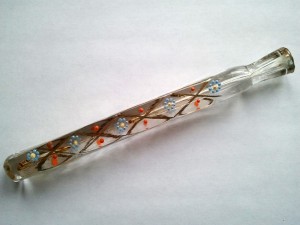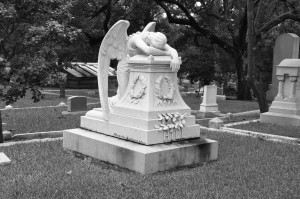 Of the more than 90 angels to be found at Houston’s historic Glenwood cemetery, one stands apart in its pose and popularity. The “Weeping Angel” at the Hill family plot is one of the most visited statues on the grounds for good reason: she is stunningly beautiful. Her hair, unbound, is highly unusual for the portrayal of heavenly being during this time period as well.
Of the more than 90 angels to be found at Houston’s historic Glenwood cemetery, one stands apart in its pose and popularity. The “Weeping Angel” at the Hill family plot is one of the most visited statues on the grounds for good reason: she is stunningly beautiful. Her hair, unbound, is highly unusual for the portrayal of heavenly being during this time period as well.
Angels of Grief, or Weeping Angel statues can be found all over the world. They portray an angel dressed in classical Roman clothes, collapsed across a monument overcome by sorrow. Her drooping wings and face hidden in crossed arms depict a deep state of mourning.
The phrase “Weeping Angel” has a totally different connotation for fans of the BBC show “Dr. Who.” Interestingly enough, those characters were inspired by writer Steven Moffat’s visit to a family graveyard, where he saw similar statues.
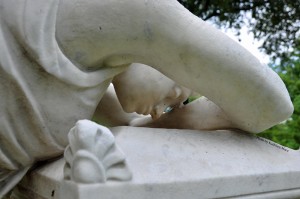 Glenwood’s angel is one of five of these mournful creatures that can be found in Texas.
Glenwood’s angel is one of five of these mournful creatures that can be found in Texas.
Locally known as “Grief,” the angel in Waco’s (McLennan County), Holy Cross Cemetery marks the resting place of merchant Emilio Davila (1864-1928) and his wife Juanita (1886-1928).
Dallas’ Grove Hill Memorial Parks angel guards the graves of Frank W. (1872-1921) and Myrtel Pickens Blakeney (1878-1962).
William Scott Youree (1872-1904) died while in Mexico. His parents and sister erected a Weeping Angel to mark his grave in the Scottsville Cemetery in Scottsville (Harrison County). His sister Susie Rose Youree (1881-1974) now rests there with him. She is missing her left hand – the most common damage found in these statues. (Houston’s version lost her hand to vandalism, but it has been repaired in recent years.)
In Denison’s (Grayson County) Calvary Cemetery, a grieving angel watches over the Lindsay family plot.
Famed sculptor Frank Teich created the angels in Houston and Scottsville. Scottsville cemetery has been said to have the largest collection of the famous stone artist’s work in one place. Glenwood has numerous, stunning examples of his work as well.
Frank Teich was a sculptor and stonecutter, born in Germany in 1856. He supervised the stonecutters and inspected the granite used in for the state capital building in Austin. He later opened Teich Monumental Works creating such pieces as the Confederate and Firemen’s monuments on the capitol grounds in Austin, the Sam Houston monument in Houston, and other famous stone and bronze works.
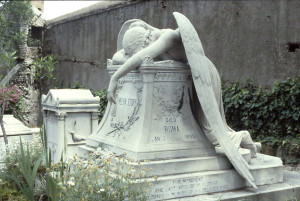 These five Texas angels, as well as others across the world, are based upon the “Angel of Grief,” a 1894 sculpture by William Wetmore Story. It serves as the grave marker of the artist and his wife at the Protestant Cemetery in Rome, Italy.
These five Texas angels, as well as others across the world, are based upon the “Angel of Grief,” a 1894 sculpture by William Wetmore Story. It serves as the grave marker of the artist and his wife at the Protestant Cemetery in Rome, Italy.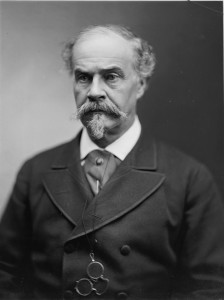
When Story’s beloved wife Emelyn died at the age of 74, the sculptor fell into despair and ceased to work. His children encouraged him to return to sculpting, if only to create a monument for their mother, and he did. After completing the statue, he left his studio and never returned. He died the following year.
The story associated with these beautiful creations is just as poignant and beautiful as they are.
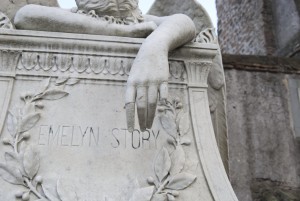
 In our last blog visit to the cemetery, we were pondering whether Elizabeth Israel’s husband was ever laid to rest beside her or if he had been interred away from his beloved wife.
In our last blog visit to the cemetery, we were pondering whether Elizabeth Israel’s husband was ever laid to rest beside her or if he had been interred away from his beloved wife. I am so grateful to know that the couple is together. I don’t know about you, but these situations can make me grieve a bit for those involved, even if they are no relation to me. Yes, people interred in cemeteries are “real” people who led very real lives. I would rather find out about them than read a fictional account of someone who never actually existed.
I am so grateful to know that the couple is together. I don’t know about you, but these situations can make me grieve a bit for those involved, even if they are no relation to me. Yes, people interred in cemeteries are “real” people who led very real lives. I would rather find out about them than read a fictional account of someone who never actually existed.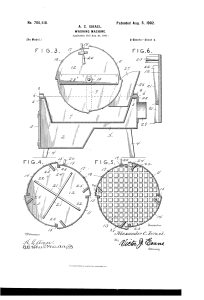 Alexander was quite ingenious, and surely his blacksmithing skills came into play with the design.
Alexander was quite ingenious, and surely his blacksmithing skills came into play with the design.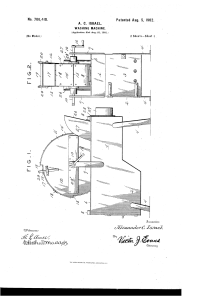 r tearing the same, and the machine is adapted for washing the finest fabrics – lace curtains and the like. The water is kept constantly boiling by the heater and s continuously circulated throughout he revolving drum an brought into contact with the clothes contained therein. The clothes are constantly carried upward and dripped by means of the radially-disposed ribs and are at the same time subjected to the scoring or rubbing action of the rotary washboard.”
r tearing the same, and the machine is adapted for washing the finest fabrics – lace curtains and the like. The water is kept constantly boiling by the heater and s continuously circulated throughout he revolving drum an brought into contact with the clothes contained therein. The clothes are constantly carried upward and dripped by means of the radially-disposed ribs and are at the same time subjected to the scoring or rubbing action of the rotary washboard.” This story has now come full circle, and I got to meet Jan and Eddie in person this week! Eddie even brought me a copy of the undertaker’s bill for Alexander’s funeral. Though the spelling is a bit amusing, once you realize that the funeral cost was quite high for the time it becomes clear that the family probably couldn’t also afford to have his side of the gravestone engraved at the same time.
This story has now come full circle, and I got to meet Jan and Eddie in person this week! Eddie even brought me a copy of the undertaker’s bill for Alexander’s funeral. Though the spelling is a bit amusing, once you realize that the funeral cost was quite high for the time it becomes clear that the family probably couldn’t also afford to have his side of the gravestone engraved at the same time.


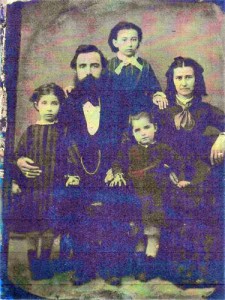
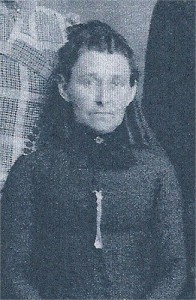
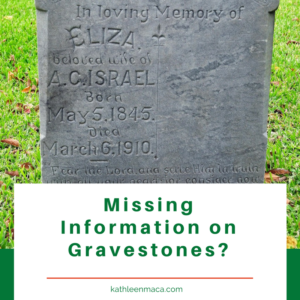


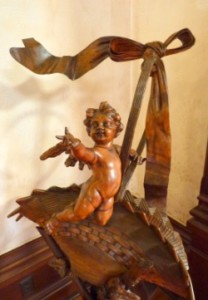
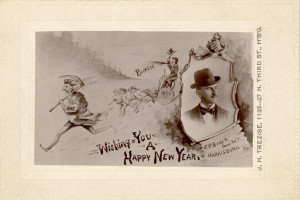
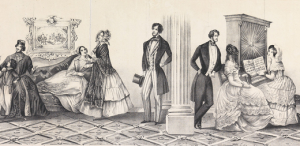 Common visiting hours were from 10 a.m. until 9 p.m. which, although it was enjoyed, must have been quite exhausting. Because of the constant “change of faces” due to the coming-and going of guests, they were to receive each as politely and pleasantly as the first. Thankfully, callers knew to avoid lunch and dinner hours.
Common visiting hours were from 10 a.m. until 9 p.m. which, although it was enjoyed, must have been quite exhausting. Because of the constant “change of faces” due to the coming-and going of guests, they were to receive each as politely and pleasantly as the first. Thankfully, callers knew to avoid lunch and dinner hours.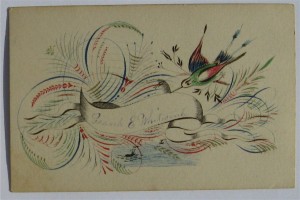 Although the ladies’ visits were considered to be less formal, they would also include refreshments, finery, and by today’s standards seem quite formal.
Although the ladies’ visits were considered to be less formal, they would also include refreshments, finery, and by today’s standards seem quite formal.
 ng holidays, we are surrounded by symbols of harvest and bounty. One of the most popular symbols of the season’s bounty is a sheaf of wheat, which is why it is often incorporated into decorations.
ng holidays, we are surrounded by symbols of harvest and bounty. One of the most popular symbols of the season’s bounty is a sheaf of wheat, which is why it is often incorporated into decorations.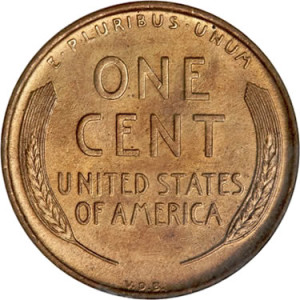 The image is so connected with bounty and prosperity that it was at one time used on United States currency.
The image is so connected with bounty and prosperity that it was at one time used on United States currency.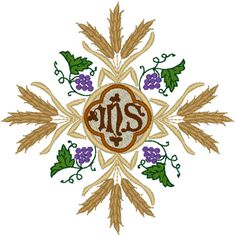 Eucharist, a motif of everlasting life through belief in Jesus. Therefore when wheat is used on gravestones or memento mori, it represents a divine harvest – being cut to resurrect the “harvest” into everlasting life or immortality.
Eucharist, a motif of everlasting life through belief in Jesus. Therefore when wheat is used on gravestones or memento mori, it represents a divine harvest – being cut to resurrect the “harvest” into everlasting life or immortality.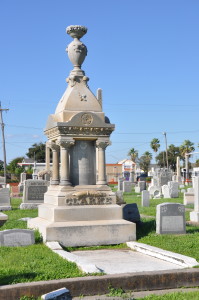 The wheat sheaf can also signify a long and fruitful life, often more than 70 years.
The wheat sheaf can also signify a long and fruitful life, often more than 70 years.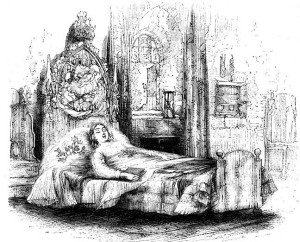 Folklore and customs concerning death and cemeteries can run from humorous to gruesome, and are almost always entertaining. Most of us have heard it’s bad luck to walk across a grave or speak ill of the dead, but if you didn’t know that collecting epitaphs could cause you to lose your memory perhaps you should read on…just in case!
Folklore and customs concerning death and cemeteries can run from humorous to gruesome, and are almost always entertaining. Most of us have heard it’s bad luck to walk across a grave or speak ill of the dead, but if you didn’t know that collecting epitaphs could cause you to lose your memory perhaps you should read on…just in case!
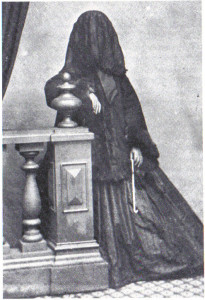
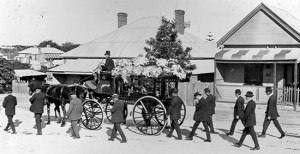
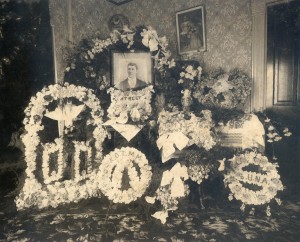


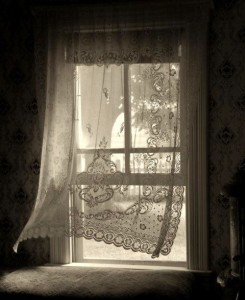



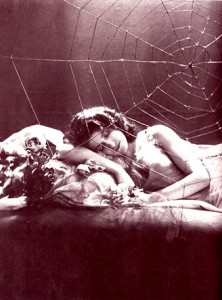

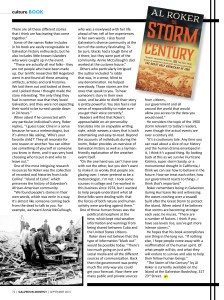
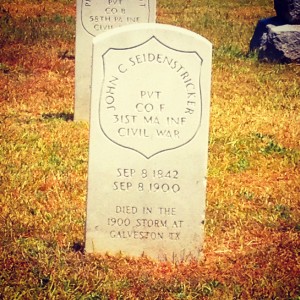
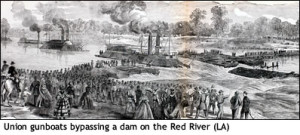 From there, Johann took part in the Red River campaign and was engaged with loss at Sabine Cross Road on April 4, 1864. He re-enlisted during the winter and left on July 21 for furlough in Massachusetts, returning to Donaldsonville in November.
From there, Johann took part in the Red River campaign and was engaged with loss at Sabine Cross Road on April 4, 1864. He re-enlisted during the winter and left on July 21 for furlough in Massachusetts, returning to Donaldsonville in November. While in New Orleans he met NOLA native Married Elenora Johanna Phillippi (1842-1906). They married on September 10, 1866 at St. Matthew’s Evangelical Church in Carrollton, Louisiana.
While in New Orleans he met NOLA native Married Elenora Johanna Phillippi (1842-1906). They married on September 10, 1866 at St. Matthew’s Evangelical Church in Carrollton, Louisiana.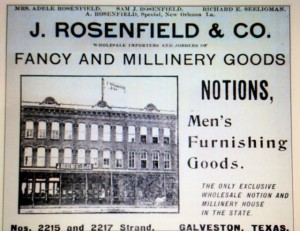
 On September 8, 1900 a hurricane which is still the nation’s worst natural disaster struck the city, smashing buildings and killing thousands of people. John was one of those lost in the tragedy. It was the day after his birthday.
On September 8, 1900 a hurricane which is still the nation’s worst natural disaster struck the city, smashing buildings and killing thousands of people. John was one of those lost in the tragedy. It was the day after his birthday.
 Glenwood’s angel is one of five of these mournful creatures that can be found in Texas.
Glenwood’s angel is one of five of these mournful creatures that can be found in Texas.
 These five Texas angels, as well as others across the world, are based upon the “Angel of Grief,” a 1894 sculpture by William Wetmore Story. It serves as the grave marker of the artist and his wife at the Protestant Cemetery in Rome, Italy.
These five Texas angels, as well as others across the world, are based upon the “Angel of Grief,” a 1894 sculpture by William Wetmore Story. It serves as the grave marker of the artist and his wife at the Protestant Cemetery in Rome, Italy.


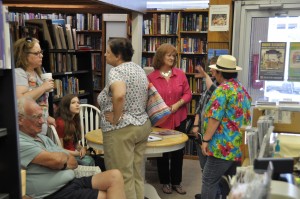



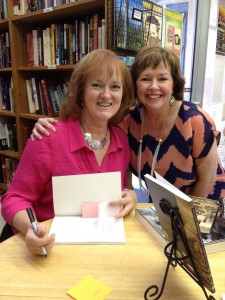


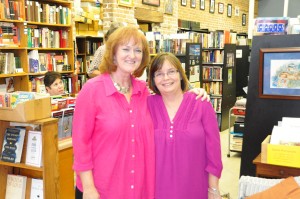

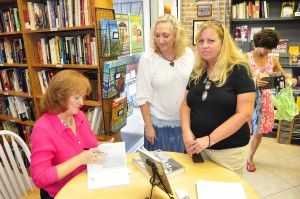
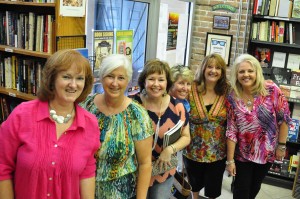
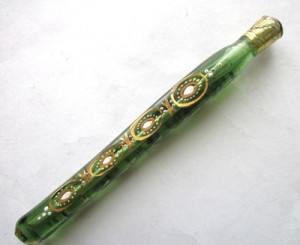
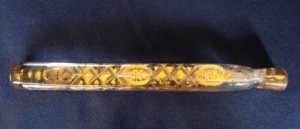 else related to mourning, they regained popularity during Victorian times. Tears were gathered in the bottles and saved by the mourners. Specially designed
else related to mourning, they regained popularity during Victorian times. Tears were gathered in the bottles and saved by the mourners. Specially designed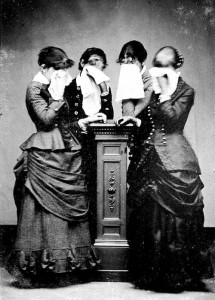 stoppers allowed the tears to slowly evaporate. When the moisture disappeared from the bottle, it could be taken as a sign that the mourning period had ended – a much more forgiving timeline than most mourning traditions of the day.
stoppers allowed the tears to slowly evaporate. When the moisture disappeared from the bottle, it could be taken as a sign that the mourning period had ended – a much more forgiving timeline than most mourning traditions of the day. American Civil War, soldiers sometimes gifted their wives and loved ones with tear bottles to fill while they were away. It was seen as a way to prove to a returning warrior that they had been dearly missed. Too often, though, the intended recipient never came home.
American Civil War, soldiers sometimes gifted their wives and loved ones with tear bottles to fill while they were away. It was seen as a way to prove to a returning warrior that they had been dearly missed. Too often, though, the intended recipient never came home.
